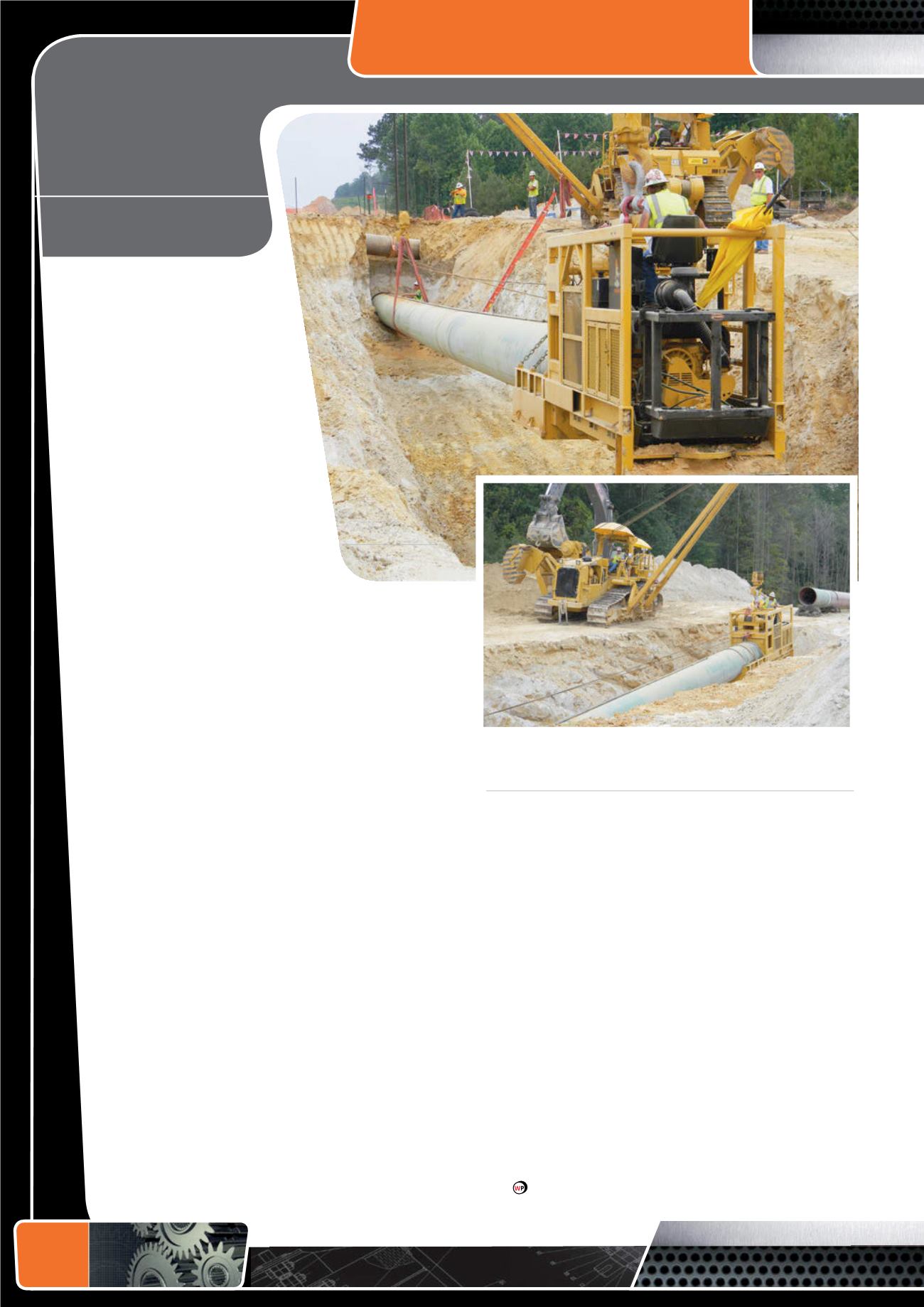
PIPELINE
MACHINERY
review
100
In recent years, the industry has
seen a dramatic increase in pipeline
projects worldwide. Cross-country
pipelines all but disappeared in the
1970s. However, with the continued
discovery of shale oil and gas,
long distance pipelines are making
a big comeback, and with them a
technology from the pipeline heydays
of the 1960s and 1970s has been
reinvented – the cradle boring machine
(CBM).
A CBM is used to efficiently install
steel casing from 16 - 48 in. dia. Casing
sections up to 120 ft can be installed
in one pass, a feat that is typically time
consuming and labour intensive with
traditional pit-launched auger boring.
“This method is designed for open-ditch,
cross-country pipeline road crossings. It operates very similar
to an auger boring machine in that it has an onboard engine
driving an auger that bores the pipe into the earth,” says Dave
Gasmovic, President of McLaughlin Boring Systems.
However, it differs vastly in design, application and
productivity. The cradle boring method helps save time
since there is no need to set up a large level bore pit. While
standard auger boring requires a launch and exit pit, a CBM
is suspended from a pipelaying side boom. Instead of using
cylinders for thrust, a CBM moves forward via a winch and a
block and tackle that is hooked up to a deadman (typically a
large piece of pipe that lies perpendicular above the casing)
at the front of a pit.
With less time and energy needed for digging pits or
setting up a tracked auger boring unit, contractors can
achieve greater footage in a single day of work. For example,
contractors have been able to complete seven 120 ft bores
in one day (a 700% production jump).
“McLaughlin has re-engineered the cradle boring
machine to include state-of-the-art safety, productivity and
control features. The McLaughlin CBM 48 is powered by
a 162 hp air-cooled and turbocharged Deutz diesel engine
that can produce 170 000 ft-lb of auger torque. A 32.5 t
hydraulic winch pulls the machine forward and offers an
adjustable winch pulling speed feature,” Gasmovic says.
A centrally mounted, fully adjustable seat provides the
operator with a clear view of the boring process and easy
access to the control console; the operator has the option
of joystick and switch functionality. The patented operator
presence control (OPC) hydraulic clutch ensure quick
driveline shutdown in case of emergency.
Safety was a top priority for McLaughlin in the engineering
of the new cradle boring machine. In prior decades of CBM
popularity, there were often many chains and belts in place
to help control the rig. In addition, crew members often had
to be positioned beneath the pipe to secure it in place. These
dangerous practices have gone by the wayside with modern
units. A casing mounted in line with the driveline, as opposed to
underneath the machine, eliminates rotating parts or exposed
chains. The load sensing circuits on the latches work so that
the CBM pump senses when chains become loose, and are thus
automatically tightened.
Jobsite setup is also a significant portion of the safety plan.
The side booms should be properly sized for the weight of the
CBM and casing being installed. The ground must be strong
enough to support the side booms and the pipe.
Cradle boring machines look and act very different from the
way they did during their first run of popularity. Today’s units
are designed with the safety features and productive capacity to
allow contractors to install hundreds of feet of pipe in a single
day.
McLaughlin,
USA
Figure 2.
The CBM is suspended from a side boom, such as a
pipelayer, and does not require the excavation of a launch or
exit pit as with standard auger boring machines.
Figure 1.
Cradle boring
machines
(CBM) have
made a
comeback
with the
resurgence of
cross-country
pipelines.


